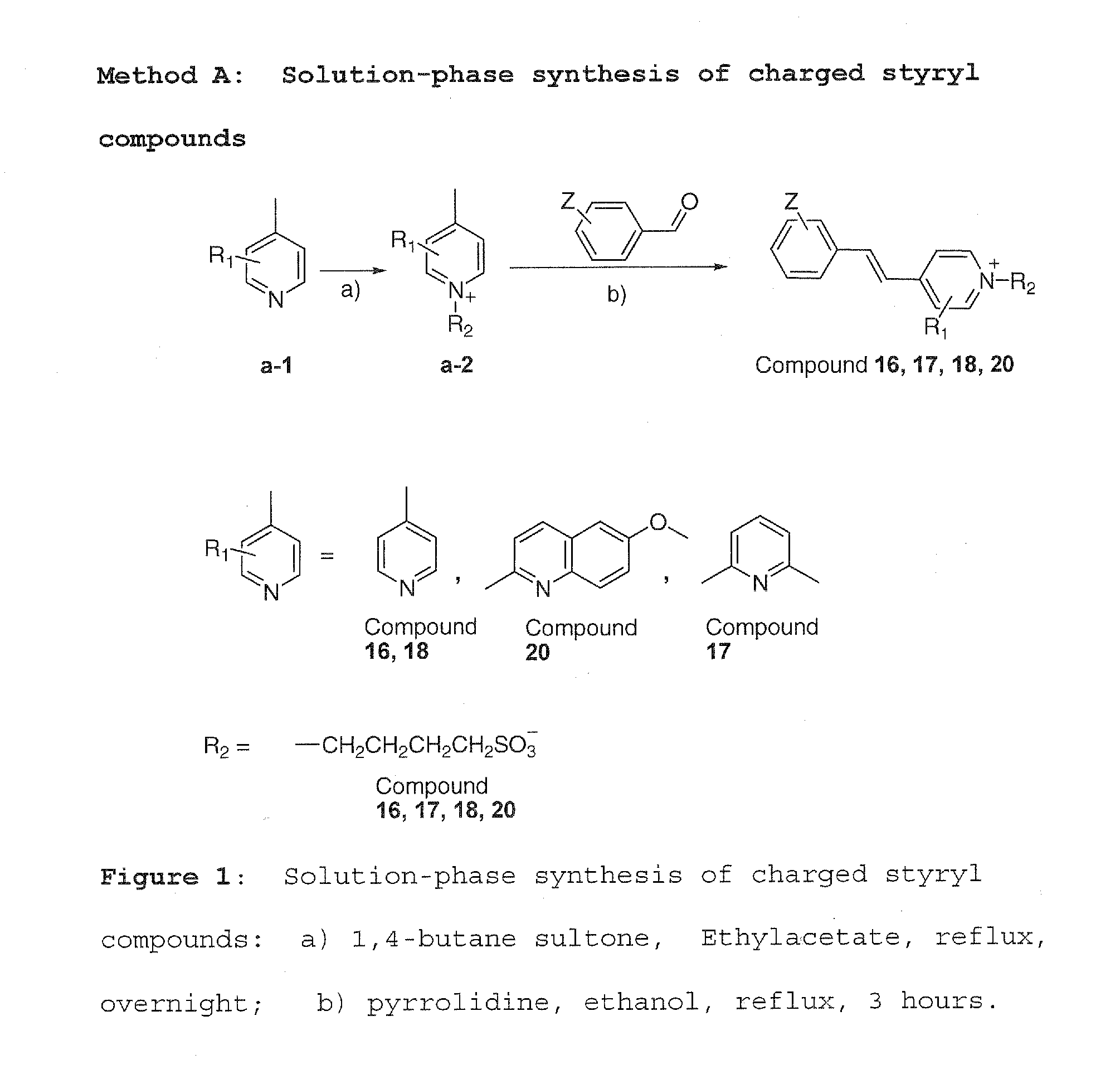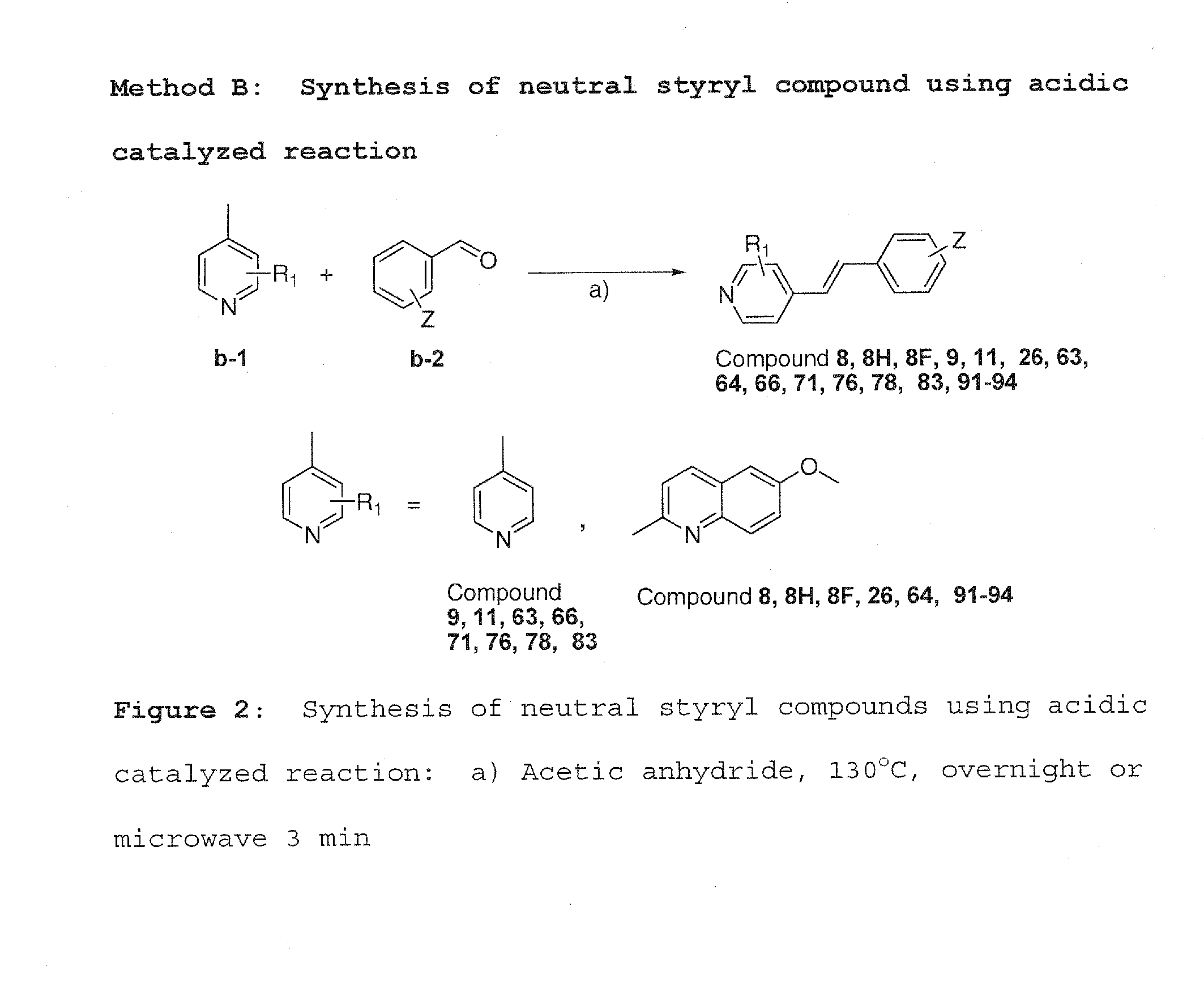Imaging agents for protein misfolding
a protein and misfolding technology, applied in the field of compound and method for imaging misfolded proteins, can solve the problem that positive-charged compounds cannot stain brain tissue to identify misfolded proteins
- Summary
- Abstract
- Description
- Claims
- Application Information
AI Technical Summary
Benefits of technology
Problems solved by technology
Method used
Image
Examples
Embodiment Construction
[0047]Method A was used to synthesize charged molecules using pyrrolidine catalyzed reactions. Methods B, C and D were used to synthesize neutral molecules.
[0048]The following non-limiting examples illustrate methods of preparing compounds according to the present invention.
[0049]Pyridine derivatives a-1 (2.04 mmol, structure shown in scheme) and 1,4-butane sultone (2.14 mmol) in ethyl acetate were refluxed overnight. After it was cooled down to room temperature, the pyridium substituted product a-2 was crystallized out. The crystals were filtered and washed with ethyl acetate three times, then dried. This product (0.08 mmol) was dissolved in 100% ethanol and different aldehyde (0.15 mmol) was added and refluxed for 3 hours. The reaction solution was then cooled down to −20° C. Final product (4 compounds) was purified by preparative TLC on silica gel (MC:MeOH=10:1).
[0050]4-Picoline or 6-methoxy quinaldine b-1 (0.12 mmol) and a different aldehyde were dissolved in acetic anhydride (5...
PUM
| Property | Measurement | Unit |
|---|---|---|
| Fluorescence | aaaaa | aaaaa |
Abstract
Description
Claims
Application Information
 Login to View More
Login to View More - R&D
- Intellectual Property
- Life Sciences
- Materials
- Tech Scout
- Unparalleled Data Quality
- Higher Quality Content
- 60% Fewer Hallucinations
Browse by: Latest US Patents, China's latest patents, Technical Efficacy Thesaurus, Application Domain, Technology Topic, Popular Technical Reports.
© 2025 PatSnap. All rights reserved.Legal|Privacy policy|Modern Slavery Act Transparency Statement|Sitemap|About US| Contact US: help@patsnap.com



